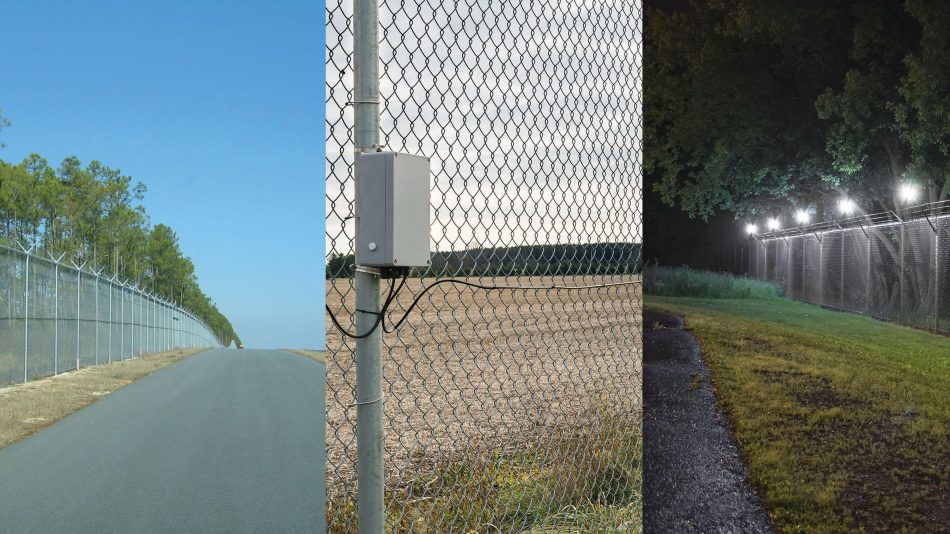A Complete Overview to Fiber Optics Infrastructure for Security Installations
The Ultimate Guide to Fiber Optic Protection Equipments for Your Service
In an age where safety and security issues are paramount for services, recognizing the complexities of fiber optic technology can be transformative. This guide outlines just how integrating fiber optic safety systems not only enhances information protection however additionally uses advantages like resistance to disturbance and real-time monitoring capacities.
Understanding Fiber Optic Innovation

The core of a fiber optic cable television is composed of a slim glass or plastic center, bordered by a cladding layer that mirrors light back into the core. Single-mode fibers are designed for long-distance transmission, while multi-mode fibers are suitable for much shorter ranges, often utilized within structures.
Optical fiber are not only much faster yet also more safe and secure than traditional wiring. Their inherent resistance to electromagnetic disturbance and the problem of using the signal without discovery make them a recommended selection for organizations focusing on information honesty and safety and security. As companies increasingly count on secure and effective communication systems, understanding fiber optic modern technology comes to be crucial for informed decision-making.
Key Benefits of Fiber Optic Safety
When thinking about security options for a service, the advantages of fiber optic systems are specifically compelling. Primarily, fiber optic innovation offers remarkable data transmission speeds and bandwidth ability, making it optimal for managing high-resolution video feeds from security cams. This capability makes certain that safety and security employees obtain real-time data, enhancing overall response times to potential safety and security hazards.
In addition, fiber optic cords are naturally resistant to electro-magnetic interference, which can endanger the stability of traditional copper-based systems. This resistance makes sure that the data transferred remains secure and uninterrupted, providing a much more dependable safety and security framework. Additionally, optical fiber are much less at risk to physical damages, as they are made from glass as opposed to metal, minimizing maintenance prices and downtime.
Another substantial benefit is the boosted scalability of fiber optic systems. As company needs advance, fiber networks can be easily broadened to accommodate added security devices without substantial overhauls to the existing framework. Finally, fiber optic systems offer improved cybersecurity features, consisting of security capacities that secure delicate data from unauthorized gain access to. Collectively, these benefits make fiber optic safety systems a robust choice for organizations looking for to improve their safety and security actions.
Setup Refine and Factors To Consider
Taking into consideration the complexities involved, the installment procedure of fiber optic safety and security systems requires cautious planning and implementation. The first step includes a thorough website assessment to recognize ideal locations for cabling and tools. This evaluation must think about environmental factors, existing infrastructure, and possible vulnerabilities.

In addition, the installment needs to conform with local building ordinance and sector standards. This might include coordinating with numerous stakeholders such as building managers, IT teams, and security workers to guarantee seamless integration with existing systems.
Post-installation, strenuous testing is required to confirm system efficiency and recognize any concerns that might emerge. By focusing on these factors to consider during the installation procedure, businesses can make sure a robust and efficient fiber optic safety system that fulfills their particular protection requirements.
Newest Innovations in Fiber Optic Safety And Security
Current innovations in fiber optic technology have significantly improved the capacities of protection systems for services. One of the most notable developments is the combination of fiber optic sensing units that can discover vibrations and breaches along the perimeter of a center. These sensing units offer real-time tracking, making it visit the website possible for fast reaction to possible violations.
In addition, the development of dispersed fiber optic noticing modern technology permits the continual monitoring of large locations with a solitary fiber cable. This method not just lowers setup prices but likewise enhances the dependability of checking systems by getting rid of the need for numerous, different sensors.
Moreover, advancements in multiplexing strategies have made it possible for companies to transfer huge quantities of information see over fiber optic networks, improving the capabilities of video clip surveillance systems. High-def video feeds can currently be sent out over long distances without loss of high quality, making certain that security employees have access to clear and actionable information.
Lastly, making use of expert system (AI) together with fiber optic systems is reinventing hazard discovery. AI formulas can evaluate information from fiber optic networks to recognize unusual patterns or behaviors, permitting for proactive safety measures. These technologies jointly represent a considerable jump onward in fiber optic security innovation.
Selecting the Right System for Your Business
Selecting the ideal fiber optic safety and security system for your service is crucial for ensuring optimum defense and comfort. To make an informed choice, examine your details safety and security needs, taking into consideration elements such as the dimension of your premises, the nature of your operations, and prospective susceptabilities.
Begin by reviewing the degree of security required; for instance, high-risk environments might demand sophisticated systems with integrated security and invasion discovery abilities. Next off, take into consideration scalability; as your business grows, your security system must can increasing to fit enhanced needs without significant overhauls.
Furthermore, investigate the dependability and performance of different systems. Look for carriers with well established reputations and consumer testimonies that vouch for their solution quality. It's additionally recommended to make inquiries regarding the modern technology's compatibility with existing framework, making certain a smooth integration process.
Verdict
In conclusion, fiber optic protection systems present a robust option for boosting business safety and security facilities. The most recent technologies further check my reference strengthen the effectiveness of these systems, ensuring that businesses remain safe and secure and versatile in an ever-evolving risk landscape.